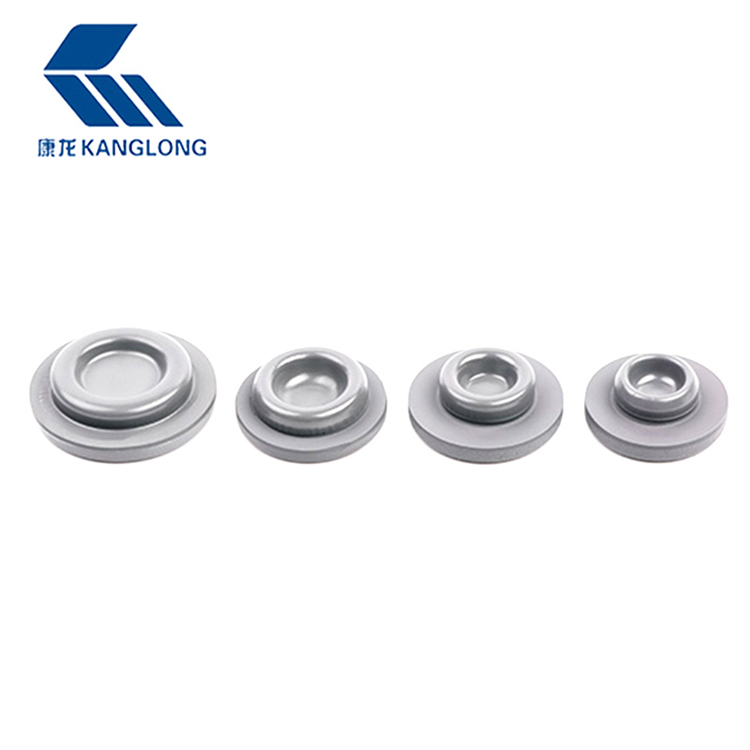Butyl rubber stoppers have played a critical role in the pharmaceutical, medical, and food industries for decades. Initially developed for their durability and versatile sealing properties, these stoppers have evolved to meet the ever-changing needs of modern manufacturing and drug delivery systems.

Butyl rubber, a synthetic rubber made from isobutylene with small amounts of isoprene, was developed in the 1940s by scientists working at Standard Oil of New Jersey (now ExxonMobil). Initially, butyl rubber was considered a significant breakthrough due to its air and moisture barrier properties, which made it an ideal candidate for various applications requiring airtight seals.
During the 1950s and 1960s, butyl rubber was increasingly used in tire inner tubes, chemical containment, and weather-resistant applications. However, its use in pharmaceutical packaging, particularly in the form of stoppers, became more prominent as the need for secure and sterile drug containers grew.
The introduction of butyl rubber stoppers in the pharmaceutical industry marked a key milestone in drug packaging. Prior to their development, glass vials were sealed with cork or rubber stoppers that were less reliable in terms of maintaining sterility and preventing contamination. Butyl rubber, with its sealing properties and low permeability to gases, became the material of choice for sealing medical vials and bottles.
Seal Integrity: Butyl rubber stoppers were highly valued for their ability to form tight, airtight seals, crucial for maintaining the stability and sterility of injectable drugs, vaccines, and other sensitive medications. This characteristic is especially important in the parenteral drug industry, where contamination could serious health risks.
Resistance to Chemical Interaction: Butyl rubber's low reactivity with pharmaceutical compounds made it an choice for medications that could degrade when exposed to air or moisture. This quality significantly improved the shelf life of drugs.
With the pharmaceutical industry's growth during the 1960s and 1970s, butyl rubber stoppers became standard in drug packaging, especially for injectable medications that required a high level of sterility and quality control.
As the pharmaceutical and medical industries evolved, so did the demands placed on butyl rubber stoppers. In the 1980s and 1990s, the focus shifted toward improving the quality and consistency of rubber materials. This led to the development of more advanced manufacturing processes for butyl rubber stoppers.
Controlled Permeability: Advances in rubber formulation allowed for more consistent permeability rates, ensuring that the stoppers continued to offer an effective barrier against moisture, air, and other contaminants.
Regulatory Compliance: With stricter regulatory standards imposed by authorities like the FDA and EMA, manufacturers began producing butyl rubber stoppers that met the rigorous quality assurance requirements of Good Manufacturing Practices (GMP). Stoppers had to pass tests for sterility, chemical compatibility, and uniformity in performance.
Elastomeric Enhancements: New formulations of butyl rubber incorporated other elastomers, such as halogenated butyl rubber, to improve the stopper's performance in high-stress conditions. This helped enhance its resistance to degradation caused by prolonged exposure to drugs, heat, and storage.
These technological advancements enabled butyl rubber stoppers to maintain their place as the preferred choice for pharmaceutical packaging.
Today, butyl rubber stoppers continue to be an integral part of pharmaceutical and medical packaging. Their applications extend beyond vials and bottles for injectable medications to include a wide range of uses in the medical and food industries.
Injectable Drug Vials: Butyl rubber stoppers remain indispensable in the packaging of injectable drugs, including biologics, vaccines, and hormones. The airtight seal prevents contamination and ensures the medication remains sterile and effective.
Prefilled Syringes and Cartridges: With the rise of self-administered therapies, especially in chronic conditions such as diabetes, butyl rubber stoppers are used in prefilled syringes and cartridges. These devices provide an easy, convenient, and reliable way to deliver medications to patients.
Biopharmaceuticals: Butyl rubber is also used in packaging for biologic drugs, which often require special handling and airtight containment to maintain their delicate structure and function. Biopharmaceuticals, such as monoclonal antibodies and gene therapies, benefit greatly from the protective properties of butyl rubber stoppers.


 English
English Español
Español


.jpg?imageView2/2/w/500/h/500/format/jpg/q/100)






